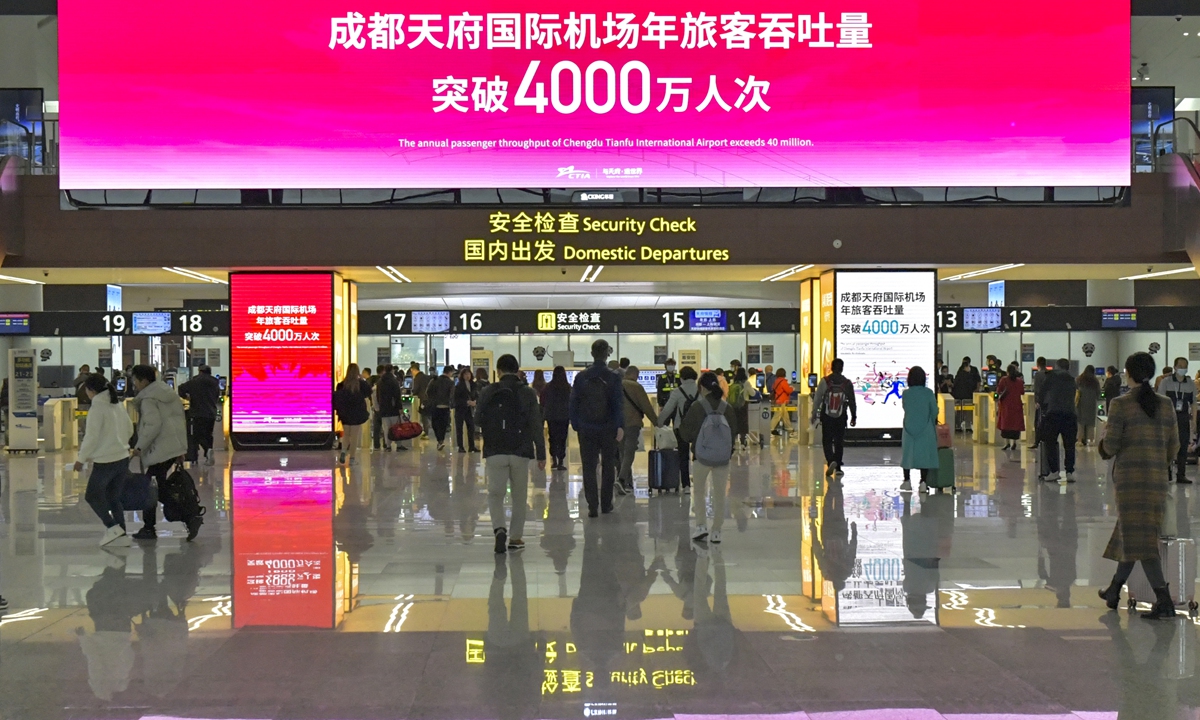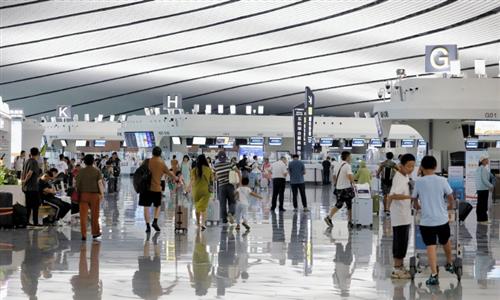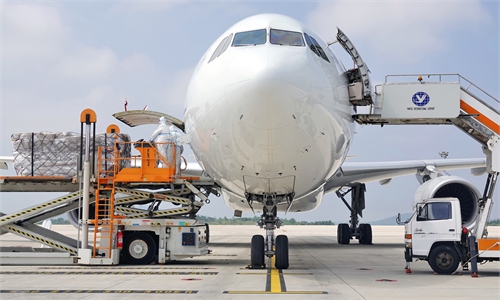
Chengdu Tianfu International Airport in Southwest China's Sichuan Province welcomes 40 million passengers as of November 23, 2023, making it one of the busiest airports in the world. The airport has 303 domestic routes, covering 182 destinations, ranking No.1 in terms of city coverage. Photo: cnsphoto
China's domestic aviation market has shown a faster recovery than the international travel segment, and the Chinese government's efforts to promote international travel will support the recovery of the latter, an official of the International Air Transport Association (IATA) told the Global Times.
China's civil aviation industry has maintained recovery momentum this year, lifted by rising demand from home and abroad.
"The recovery in the domestic aviation market tends to be faster than the international market. China is no different," said Xie Xingquan, regional vice president for IATA North Asia.
As of October, revenue passenger kilometers for China's domestic market stood at 6.7 percent above pre-COVID levels, Xie said.
The upward trend is also shown in airlines' performances. In November, major carriers such as Air China, China Eastern Airlines and China Southern Airlines reported rising passenger turnover.
Air China's passenger traffic exceeded the level of the same period in 2019 by 11.4 percent. For Juneyao Airlines, the increase was 6.9 percent, and for Spring Airlines, it was 7.8 percent. China Southern Airlines and China Eastern Airlines have both recovered to more than 90 percent of 2019 levels.
IATA data showed that China's international travel remains 40 percent below pre-pandemic levels. Regarding international travel to and from the Chinese mainland, Xie said that various factors could affect it. For example, on the supply side, the number of international flights is below 60 percent of 2019 levels.
Perceptions about the safety and security of some international destinations also have an effect on international travel, he added.
He said China's reinstatement of the 144-hour visa-free transit at certain points of entry is a "positive development."
Starting from November 17, China expanded its visa-free transit policy to include citizens of Norway for 72- or 144-hour stays, bringing the total number of applicable countries to 54.
Also, China would roll out a one-year visa-free policy to citizens from six countries - France, Germany, Italy, the Netherlands, Spain and Malaysia - starting on December 1, 2023, according to the Chinese Foreign Ministry on November 24, as part of fresh efforts to bring about cross-border people-to-people exchanges to serve the country's high-quality development and opening-up.
"We welcome the extension of visa-free travel to a number of European and Asian countries. We hope the Chinese government will consider expanding the list," he said.
Data from industry news outlet carnoc.com showed that the number of passengers carried by the six major airlines on international routes in November was 3.005 million, or 55.5 percent of the same period in 2019. The number of international flights serving China has recovered to 70 percent of 2019 levels and it's continuing to improve.
Starting from November 9, regular direct passenger flights between China and the US increased from 48 per week to 70.




